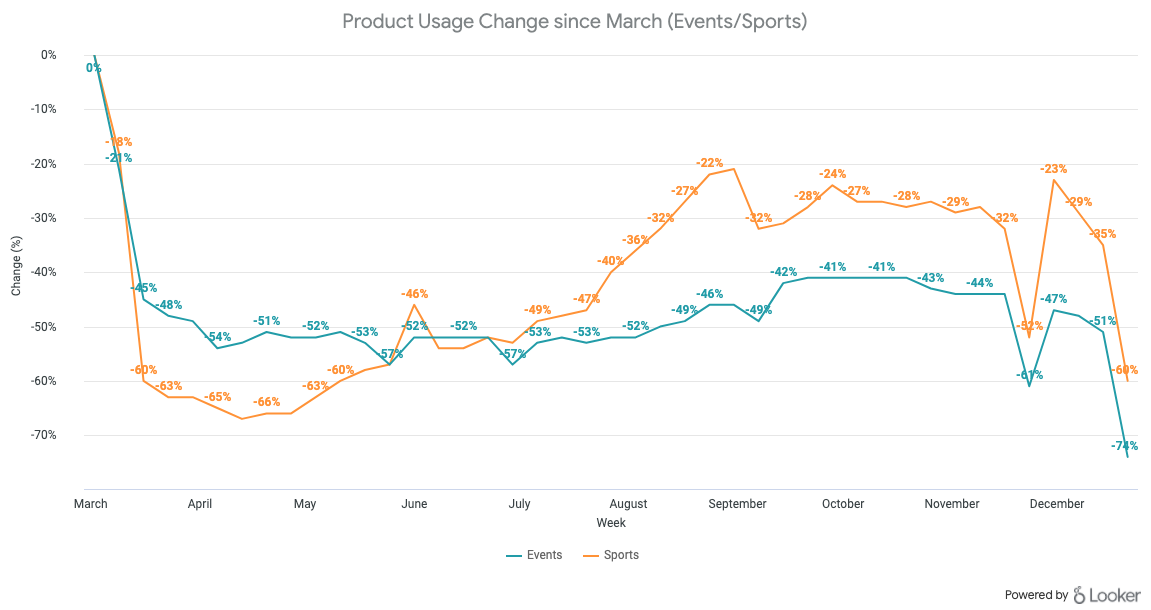This is part of a series of posts on the impact of the COVID-19 crisis on software product usage across 40+ industries and sub-industries, based on an analysis of anonymized product usage data across Pendo customers. The analysis began the first week of March 2020 and all percentages are against that baseline.
Since the beginning of the pandemic, Pendo’s trove of product usage data has provided incredible real-time insight on the impact on the digital economy. We saw the spike in online banking usage when stimulus checks hit bank accounts, the re-emergence of hotel bookings from Labor Day through Christmas, the rebound of recruiting starting in September, telehealth providers’ busy June, and a massive increase in usage of e-commerce and shipping platforms during the holiday shopping season.
As we kick off the new year, this data can also give us a hint at what’s to come in 2021 and beyond. Here are ten industry trends we’ll be watching through software usage data this year.
1. Restaurants: Dining will continue to go digital
Much has been said about the trials of restaurants in 2020. But while one in six shut down for good, the other five turned to software to help manage online orders, curbside pickup, delivery, new retail offerings, PPP loans, new health and safety protocols, employee training, contactless payments, and more.
Product usage came out of the negative at the end of August and spiked up nearly 600%, remaining near that level until a slow downward climb in November. At year-end, usage of restaurant software was up 341%. How things shake out in the new year may come down to the duration of the pandemic, but it sure seems like the dining habits we formed over the last nine months are likely to remain, and restaurants that invested in digital are more likely to survive.
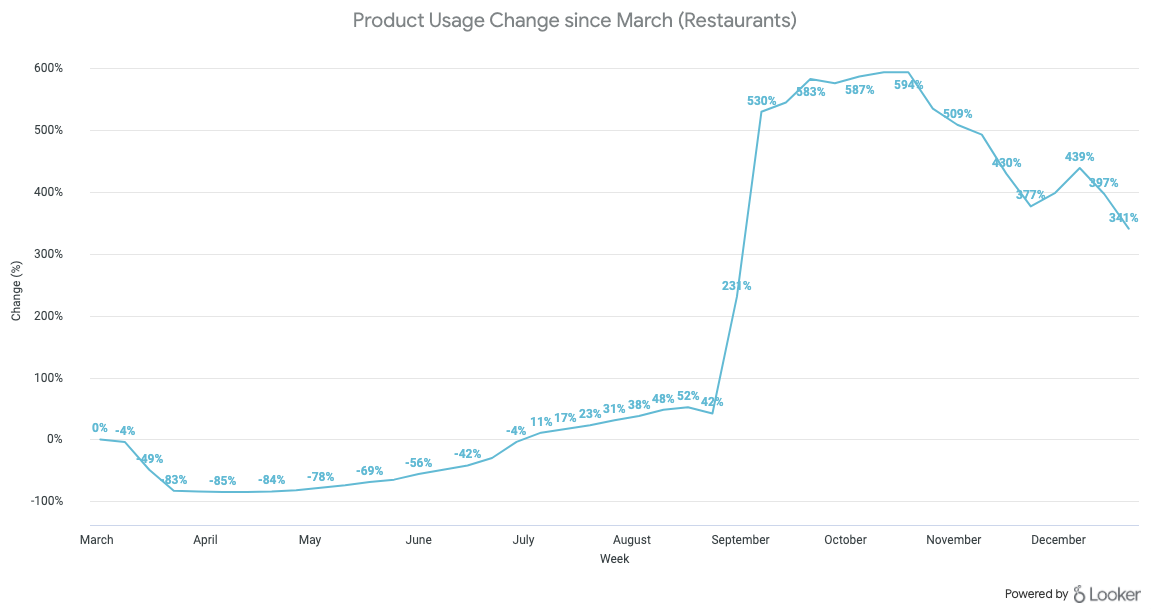
2. E-learning: Moving toward a hybrid model
School districts had been investing in technology for years, but the pandemic forced billions of teachers, parents, and students to use these tools. What role will these platforms play once learning returns to a largely in-person event? It’s too soon to tell. Though some students returned to classrooms in the fall (see increase in general education software in September), usage of e-learning platforms still peaked to 285% over the March baseline and then remained near that level through the end of the year. If WiFi and other access issues can be resolved and platforms invest in the product experience, perhaps hybrid learning will finally stick even once classrooms are full again.

3. Shipping: Will the demand stick around?
Usage of shipping software grew steadily over the course of 2020, only dipping slightly during a couple of summer weeks. By year’s end, usage had climbed 239% above our March baseline. Of course, the holidays drove much of the year-end traffic, but this software market will be one to watch in 2021 as pandemic fears slip and long term shopping behaviors become more clear.
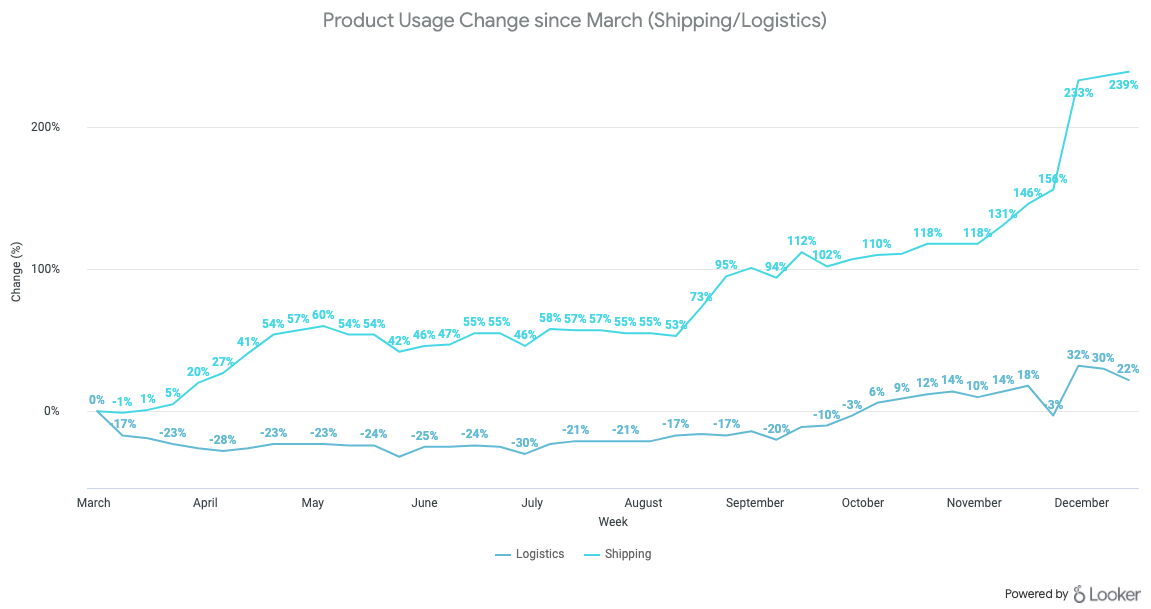
4. Digital banking: Online and mobile will remain supreme
Bank visits will be fewer and further between for the millions of people who started using online and mobile banking apps over the course of the pandemic. A climb in banking software usage that began in April with the first round of stimulus payments and PPP loans never really stopped, peaking at 135% above the March baseline at the end of November. Banks are moving more of the customer experience into their banking applications, so we are likely to see continued growth in this category of software.

5. Collaboration: Software is more crucial than ever
The move to remote work dominated news headlines over the course of 2020, as more large companies announced long-term plans to offer remote or partially-remote work even once COVID-19 subsides. Collaboration software platforms benefitted, spiking up to 170% over pre-pandemic levels. It might seem like the mass migration to these platforms already happened during year one of the pandemic, but we’ll be watching for any additional shifts as more companies face long-term workplace decisions.

6. Virtual healthcare: Companies will continue to invest
If you haven’t had a telemedicine visit during the pandemic, you probably will soon—new research shows that 83% of people expect to set up virtual appointments once the pandemic subsides. Our data showed the biggest spike in use of telehealth platforms in June, as the virus spread more widely across the United States. Usage only dropped around the Labor Day and Thanksgiving holidays, ending the year 100% above the March baseline. Telehealth is one of a handful of investments that healthcare companies are making to improve their digital experience.
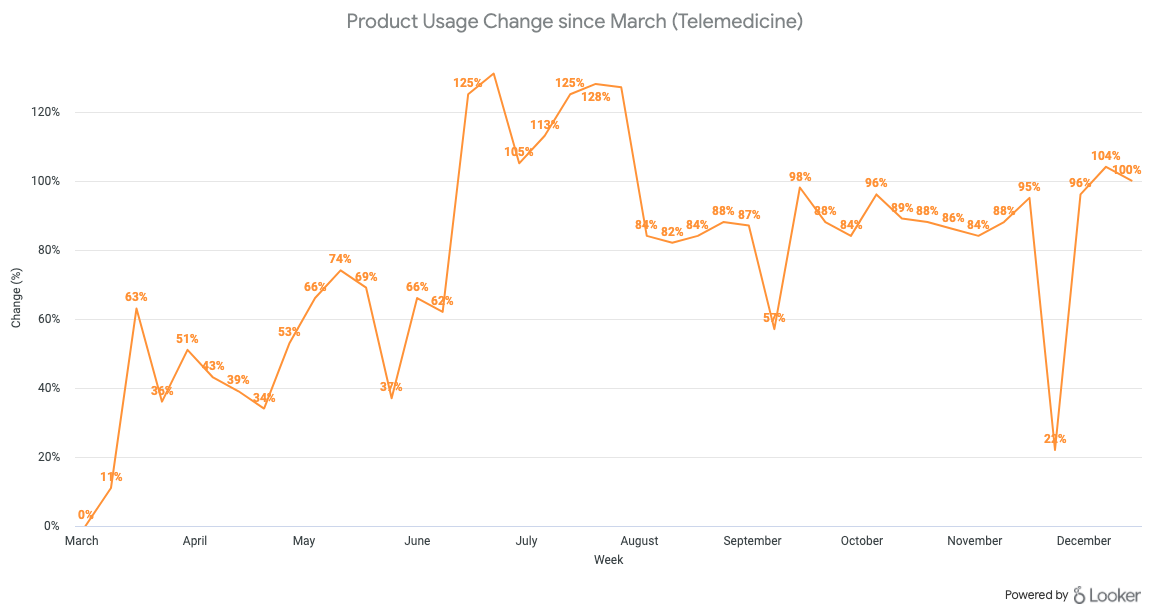
7. E-commerce: Online shopping is everywhere
Perhaps fear made us all stop spending money online during the first few weeks of the pandemic. That trend reversed quickly, evidenced by the climb of e-commerce software usage starting in April to peak at 127% above the baseline just after Thanksgiving. Retail software usage was negative most of the year besides the three weeks prior to Christmas, when some people wandered into stores to find last minute items or avoid shipping deadlines. Many near year predictions include e-commerce enabled in nearly every app you use online—this trend is likely here to stay.
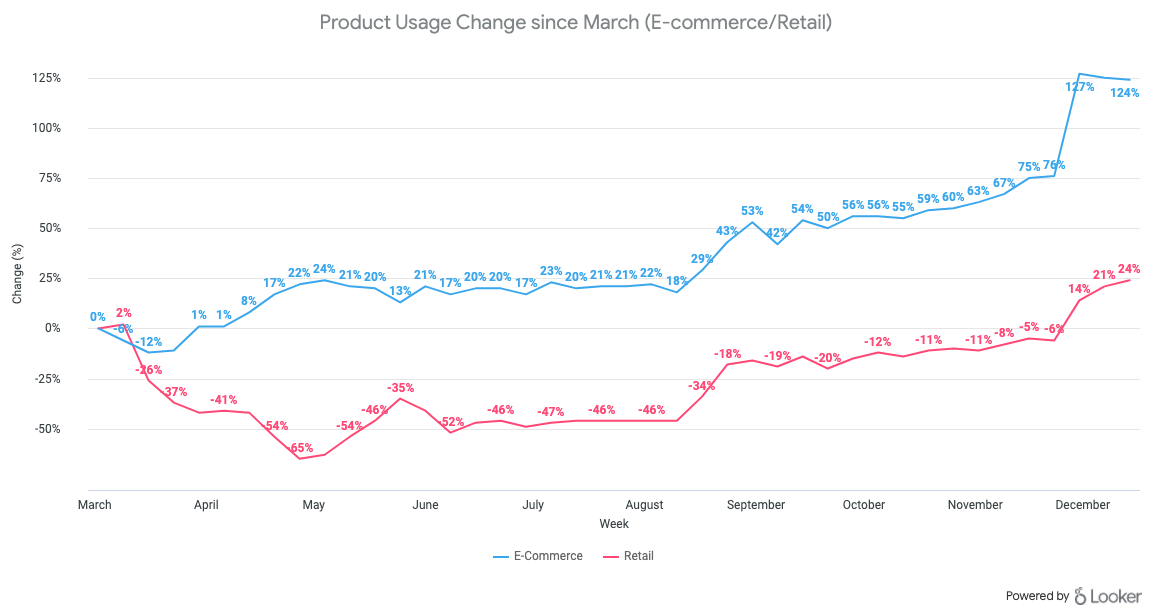
8. HR software: Virtual onboarding and training is here to stay
Many companies slowed hiring plans for the first six months of the pandemic—but use of recruiting software began to rise in September and stayed that way other than small dips the weeks of Thanksgiving and Christmas.
Many companies focused their efforts inward during this time, investing in virtual onboarding, training, and development opportunities for their staff—corporate training software usage stayed between 40-50% above the March baseline until the last two weeks of 2021. With more teams going remote for the long term and the newfound convenience of offering learning opportunities virtually, usage of these tools could eclipse in-person onboarding and training in the future.

9. Hospitality: A resurgence over time
Hospitality software usage showed its first signs of life just before the Labor Day weekend, perhaps as more people got comfortable with hotel stays under pandemic restrictions. Usage peaked at 130% above the March baseline in October and remained up through the end of the year. Meanwhile, use of travel software stayed in the negative throughout 2020, dropping 45% below the baseline in December 2020. Many 2021 forecasts include a burst in travel and social activities in the latter part of 2021, as vaccinations become pervasive—we will be watching this data for early signs of that exuberance.
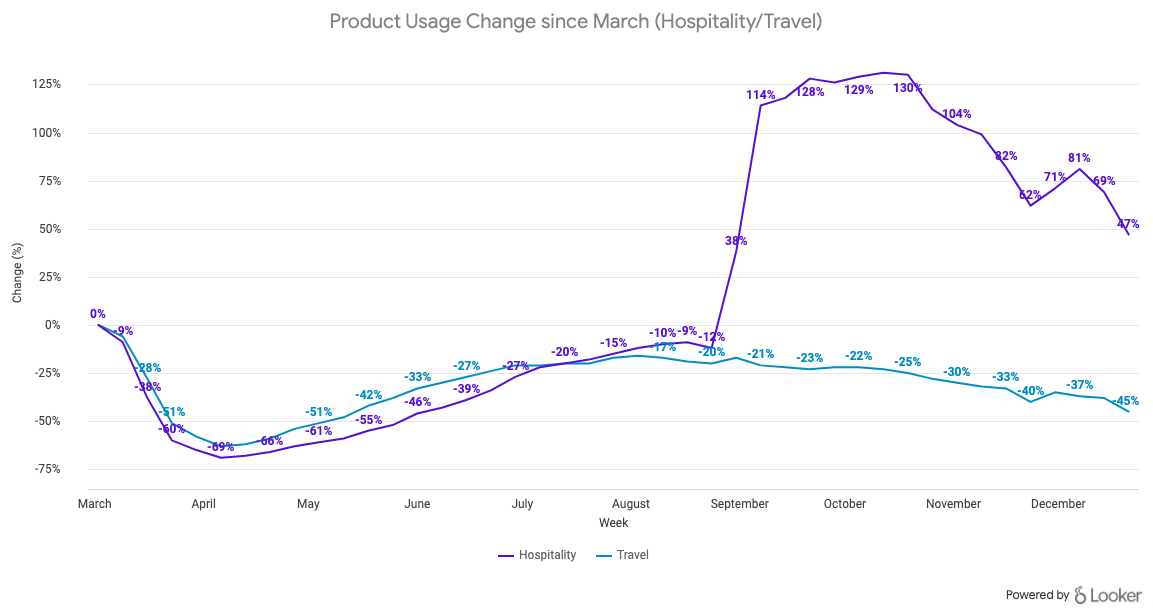
10. Events: Slower returns to normal
Events and sports software usage patterns prove that we’re all pretty uncertain when we’ll start gathering in groups again. Use of events software stayed around 50% below our March baseline over the course of 2020, with sports not far behind. As with travel, this data may show early signs of confidence in the return of more normal social patterns.
